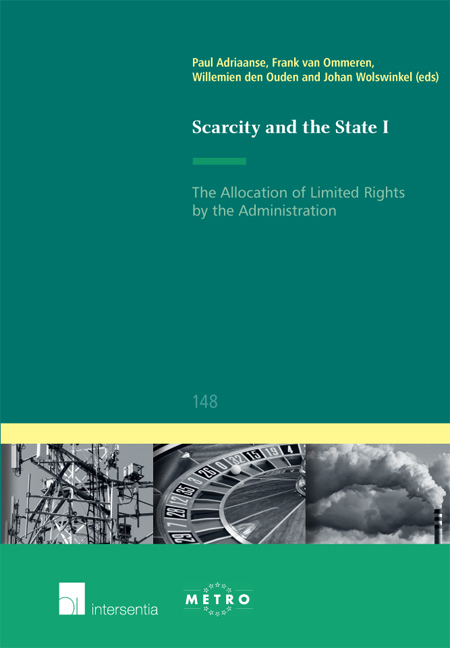Book contents
- Frontmatter
- Foreword
- Editors’ Preface
- Contents
- Part I General Perspectives
- Part II Eu Law Perspectives
- Part III Comparative Law Perspectives
- Chapter 12 ‘Let It Be’? The Regulation and Allocation of Gambling Licences at the EU and Member State Level
- Chapter 13 The Allocation of Radio Frequencies; Overview of Spectrum Policy and Regulation in Europe
- Chapter 14 The Allocation of Emission Rights
- List of Contributors
- Ius Commune Europaeum
Chapter 13 - The Allocation of Radio Frequencies; Overview of Spectrum Policy and Regulation in Europe
from Part III - Comparative Law Perspectives
Published online by Cambridge University Press: 22 September 2018
- Frontmatter
- Foreword
- Editors’ Preface
- Contents
- Part I General Perspectives
- Part II Eu Law Perspectives
- Part III Comparative Law Perspectives
- Chapter 12 ‘Let It Be’? The Regulation and Allocation of Gambling Licences at the EU and Member State Level
- Chapter 13 The Allocation of Radio Frequencies; Overview of Spectrum Policy and Regulation in Europe
- Chapter 14 The Allocation of Emission Rights
- List of Contributors
- Ius Commune Europaeum
Summary
Introduction
Legal theory and practice concerning radio frequencies are among the topics chosen by the editors of this book in the search for a general legal theory on allocation of limited authorisations and grants in the EU Member States. The topic is timely, as there have been substantial developments within the European Union (EU) over the last decade, even in the last few years. This period has seen a strong shift in emphasis in Europe from non-binding decisions reached by spectrum technical experts acting within the European Conference of Post and Telecommunication Administrations (CEPT), to EU law defined by directives and decisions of the European institutions in Brussels. This shift has occurred for many reasons, among them (a) an emphasis on EU policy guidelines supplanting purely technical decisions on radio spectrum and (b) the immense increase in the value and use of radio spectrum in general.
This overview first discusses certain critical terminology unique to the spectrum field. It then examines the following series of questions:
1. How is the limitation of… radio frequencies constructed legally? How is a maximum – a ceiling – to this public right created within a given period?
2. What kind of allocation procedure is being used? Are authorisations being allocated by a competitive method?
3. How are favoritism and nepotism being prevented? How is the equal/fair treatment of newcomers being approached?
4. Which general legal principles (e.g. of proper or good administration/transparency) play an important role in the national debate or jurisprudence concerning the allocation of… radio frequencies?
5. Are there any national cases in which competition law (e.g. abuse of a dominant position or State aid) played an important role?
6. Which specific problems of legal protection might be considered to be the most important or interesting issues …?
As shall be seen, this overview discusses most closely the first question, as it permits direct identification of EU legal standards that apply specifically to radio frequency use, which must be implemented by the EU Member States.
Telecoms Terminology and Main Actors
At the outset, it is necessary to get past the jargon, as the radio spectrum field, similar to many other fields, defines itself with a barrage of technical terms that can confound outsiders.
- Type
- Chapter
- Information
- Scarcity and the StateThe Allocation of Limited Rights by the Administration, pp. 323 - 340Publisher: IntersentiaPrint publication year: 2016



